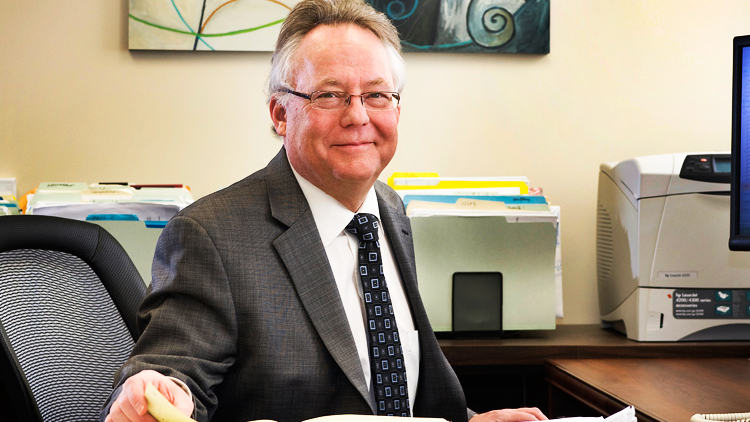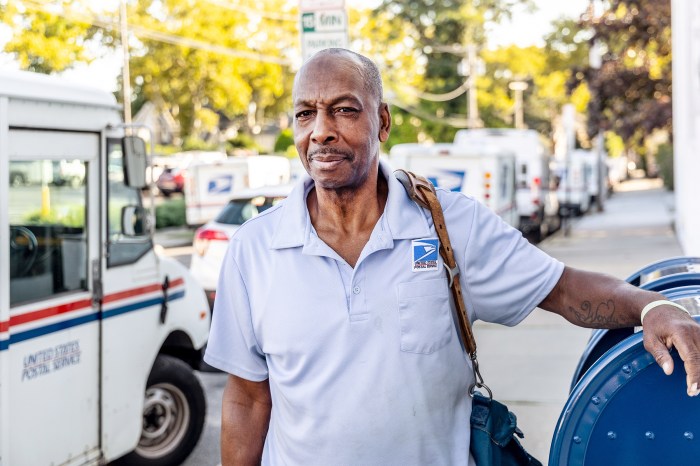The newly appointed director of the Brookhaven National Laboratory—one of the nation’s most advanced research facilities—does normal things like any Long Island father of two teenage sons. He watches a lot of soccer and grills on the weekends. He also helps his wife in the kitchen.
But Doon Gibbs’ career is routinely mind-boggling. He’s studied “scattered X-rays,” “condensed matter,” nano-materials and magnetism; he’s stood elbow to elbow with scientists looking into the origin of the universe and others using isotopes to treat cancer or figuring out how to make a better battery.
After getting his Ph.D. in physics from the University of Illinois at Urbana-Champaign in 1982, Gibbs joined BNL a year later as an assistant physicist. In 2007 he became deputy laboratory director for science and technology, and filled in as the interim director last December until he got the top job on March 29th. Now he oversees 3,000 employees, more than 4,000 facility users, and handles an annual budget of more than $700 million, which is subject to the very unscientific whims of Congress.
Gibbs, 59, is fluent in the inner workings of BNL’s National Synchrotron Light Source II, which streams X-rays to probe matter, and he’s familiar with another one of the lab’s cutting-edge technologies, the Relativistic Heavy Ion Collider (RHIC, pronounced “Rick”), which gives scientists “a glimpse of the universe within a few millionths of a second after it was born—and that’s really cool.”
Basically, the multi-million-dollar device accelerates ions in opposite directions within some football field-size underground rings until the ions collide at temperatures that are 250,000 times hotter than the center of the sun. But the collision doesn’t last “long enough to heat your coffee up,” Gibbs says. “The protons melt for a very brief instant,” he explains, “and that lets us look at the fundamental particles inside—they’re called quarks and gluons—and what we find is that at those high temperatures and those densities they form a perfect fluid. It flows without viscosity, without resistance—and it’s a total surprise!”
Physicists call these interactions of quarks and gluons “strongly correlated,” Gibbs says, “and they have surprising analogies in high-temperature superconductors and in ultra-cold atoms and, amazingly enough, in black holes. So there may well be some underlying principles that connect those surprisingly different phenomena.”
Gibbs grew up in Utah, where his dad was a physicist, but he didn’t intend to follow in his footsteps. In college he studied English and the humanities at first. “I tried lots of other things, and I discovered that the kinds of things I was really interested in ultimately had to do with science, with asking really specific kinds of questions and then trying to answer them definitively.”
But some pursuits are better left unsaid, he admits.
“‘Why is there a universe?’ isn’t the kind of question that us science guys normally take on,” he chuckles.
Asked how he got his name, he says his parents had called him Grundoon, a baby groundhog character in Walt Kelly’s comic strip “Pogo,” known for having trouble keeping his diaper on. “When I was two or three, I said, ‘Me Doon, not Grundoon.’” His resolve was irrefutable, so the name stuck.
One problem with becoming BNL’s director is that he doesn’t regularly get to do research anymore. It makes him wistful but he looks at the big picture.
“When you do have some kind of a discovery that you’re a part of, whether it’s large or small, it’s really exciting and personal,” he says. “I think I’m pretty happy exactly where I am.”
































